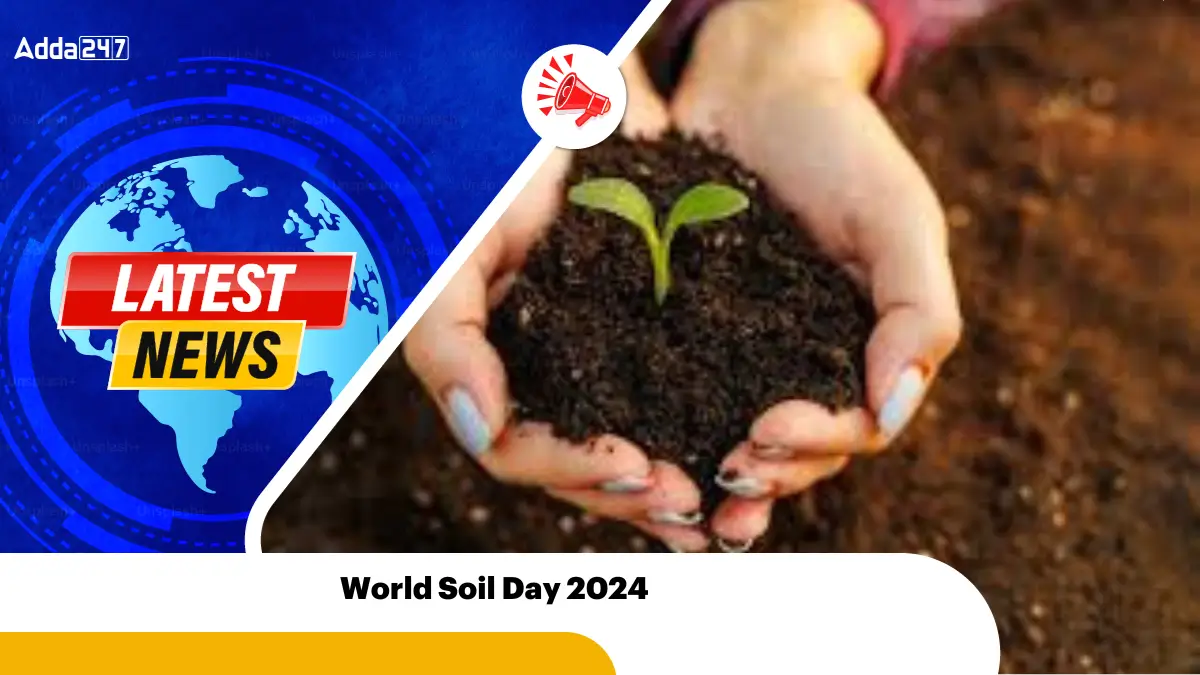World Soil Day, observed annually on 5th December, highlights the importance of healthy soil and advocates for the sustainable management of soil resources. This global event aims to raise awareness about soil conservation and its role in sustaining life on Earth.
Background of World Soil Day
The idea of celebrating an international day dedicated to soil was first proposed by the International Union of Soil Sciences (IUSS) in 2002. The proposal gained traction under the leadership of the Kingdom of Thailand and the Global Soil Partnership (FAO), which played a crucial role in formalizing the initiative.
Key Milestones:
- 2013: The FAO Conference unanimously endorsed the idea of World Soil Day.
- 2013: The UN General Assembly officially designated 5th December 2014 as the first World Soil Day.
- 5th December was chosen to honor the birth anniversary of H.M King Bhumibol Adulyadej, the King of Thailand, who significantly supported the cause.
- Post the monarch’s demise in 2016, the day became a tribute to his seven decades of leadership.
This year, the 10th celebration of World Soil Day is hosted by the Kingdom of Thailand, making it particularly significant.
World Soil Day 2024 Theme, “Caring for Soils: Measure, Monitor, Manage”
The theme focuses on the importance of accurate soil data to understand its characteristics and to support sustainable soil management for ensuring food security. It emphasizes measuring, monitoring, and managing soil health for long-term ecological balance.
Why is Soil Significant?
Soil is the foundation of life on Earth, supporting ecosystems, agriculture, and water systems. Here are the primary reasons why soil health is vital:
- Supports Plant Life: Soil provides essential nutrients, water, and minerals for plants and trees.
- Home to Microorganisms: It hosts millions of insects, bacteria, and animals, contributing to biodiversity.
- Food Production: 95% of the world’s food relies on healthy soils.
- Climate Mitigation: Soils store large amounts of carbon, helping combat climate change.
- Water Filtration: Healthy soils filter water and recycle nutrients.
Key Facts About Soil
- Food Dependency: 95% of global food comes from soils.
- Degraded Soil: 33% of the world’s soils are degraded.
- Formation Time: It can take up to 1,000 years to produce 2-3 cm of soil.
- Nutrient Provider: Soils supply 15 out of 18 essential chemical elements for plants.
- Microbial Life: One tablespoon of soil contains more organisms than the Earth’s human population.
- Nutrient Decline: Over the last 70 years, food nutrient levels have drastically decreased.
- Hidden Hunger: 2 billion people worldwide suffer from micronutrient deficiencies linked to poor soil quality.
- Future Demand: By 2050, agricultural production needs to increase by 60% to meet global food demand.
- Sustainability Potential: 58% more food can be produced through sustainable soil management.
- Composting: Up to 50% of household waste can be composted to improve soil health.
Challenges: Salt-Affected Soils
Salt-affected soils pose a major threat to agricultural productivity, especially in arid and semi-arid regions. These soils result from insufficient rainfall, which prevents salts from being leached, leading to accumulation.
Economic Impact:
Salinization in irrigated areas costs an estimated USD 27.3 billion annually in lost crop production.
Types of Salt-Affected Soils
Saline Soils:
- Contain excessive soluble salts, making it difficult for plants to absorb water.
- Common in arid landscapes.
Sodic Soils:
- Carry high levels of sodium ions, damaging soil structure.
- Result in compact soil, restricting root growth.
Causes of Salt-Affected Soils
- Natural Factors: Found in arid, semi-arid, and coastal areas, these soils host unique ecosystems but are naturally salty.
- Human-Induced Factors: Unsustainable agricultural practices and climate change exacerbate soil degradation, reducing fertility.
What Can Farmers Do to Halt Salinization?
Farmers can take several measures to manage and reclaim salt-affected soils effectively:
- Cultivate Salt-Tolerant Plants: Grow crops that can thrive in saline soils.
- Use Quality Irrigation Water: Ensure water used has low salt levels.
- Monitor Coastal Soil Salinity: Regularly test soil and groundwater in coastal areas.
- Enhance Organic Matter: Add organic matter to improve soil fertility.
- Reduce Evaporation: Use mulching techniques to conserve moisture.
- Add Gypsum to Sodic Soils: Gypsum helps restore soil structure.
- Control Pumping: Minimize water extraction when salinity increases.
- Salt Removal Practices: Implement methods to leach salts out of the soil.
World Soil Day 2024: Summary
| Heading | Details |
|---|---|
| Why in News | World Soil Day is observed annually on 5th December. The 2024 theme is “Caring for Soils: Measure, Monitor, Manage”. This year marks the 10th global celebration, hosted by Thailand. |
| Significance | – Highlights the importance of healthy soil. – Advocates sustainable soil management for food security and ecological balance. |
| Theme 2024 | “Caring for Soils: Measure, Monitor, Manage” focuses on the importance of soil data for sustainable decision-making. |
| Background | – Proposed by International Union of Soil Sciences (IUSS) in 2002. – Officially recognized by the UN General Assembly in 2013. – Date chosen to honor King Bhumibol Adulyadej of Thailand. |
| Significance of Soil | – Supports plant life with nutrients, water, and minerals. – Essential for biodiversity and carbon storage. – Vital for food production and climate change mitigation. |
| Key Facts About Soil | – 95% of food comes from soil. – 33% of soil is degraded. – Takes 1,000 years to form 2-3 cm of soil. – 58% more food can be produced with sustainable soil management. |
| Salt-Affected Soils | – Found in arid, semi-arid, and coastal areas. – Costs $27.3 billion annually in crop loss. |
| Types of Salt-Affected Soils | 1. Saline Soils: Contain excess soluble salts, hindering water absorption by plants. 2. Sodic Soils: High sodium ions damage soil structure, compacting it. |
| Solutions for Salinization | – Use salt-tolerant plants. – Ensure irrigation water has low salt content. – Add organic matter and gypsum to improve soil. – Use mulching to reduce evaporation. |
| Economic Impact | Soil degradation and salinization cost $27.3 billion annually in lost crop productivity. |



 Shaheedi Hafta 2025: Complete History, D...
Shaheedi Hafta 2025: Complete History, D...
 Good Governance Day 2025: A Tribute to V...
Good Governance Day 2025: A Tribute to V...
 Christmas 2025: When and How it is Celeb...
Christmas 2025: When and How it is Celeb...







